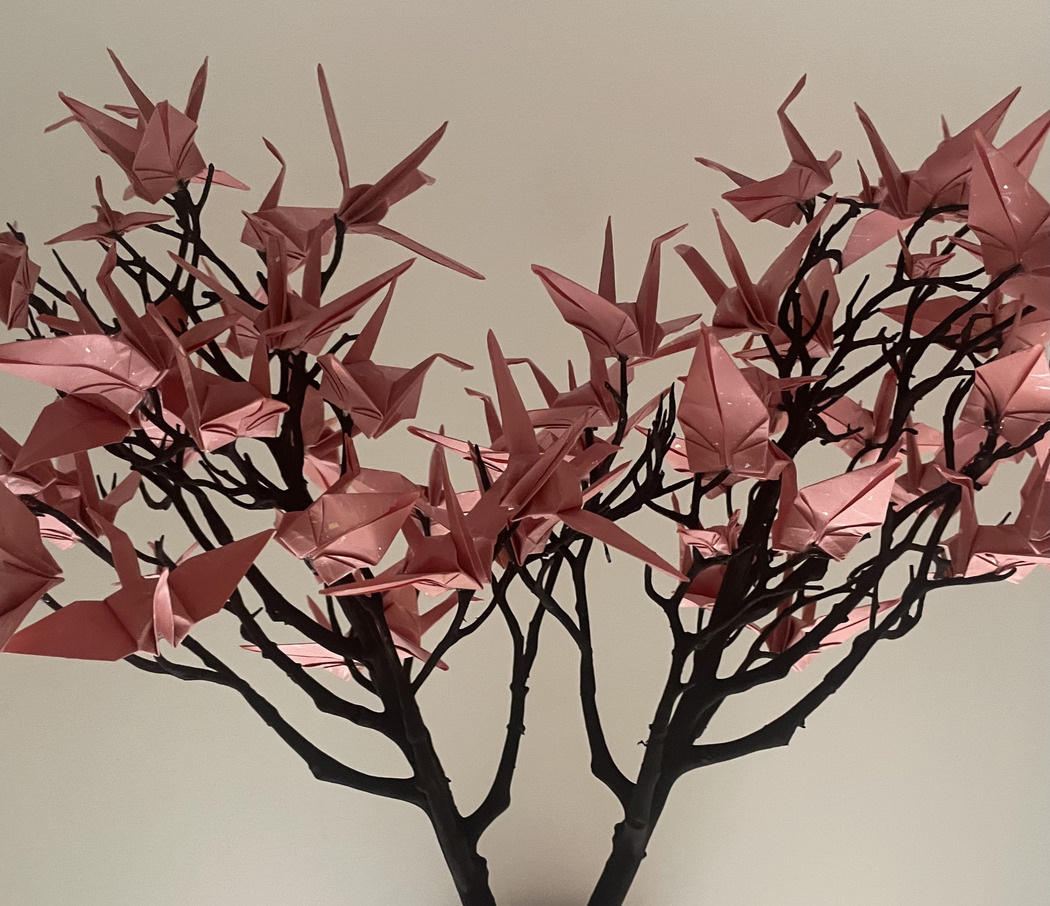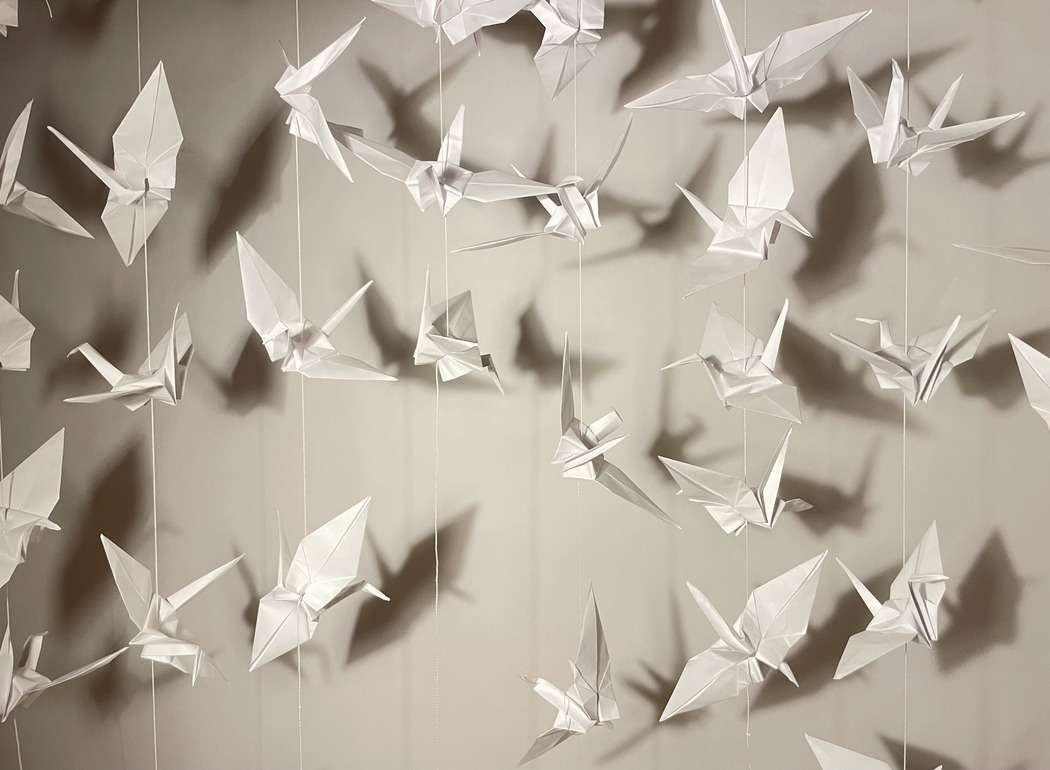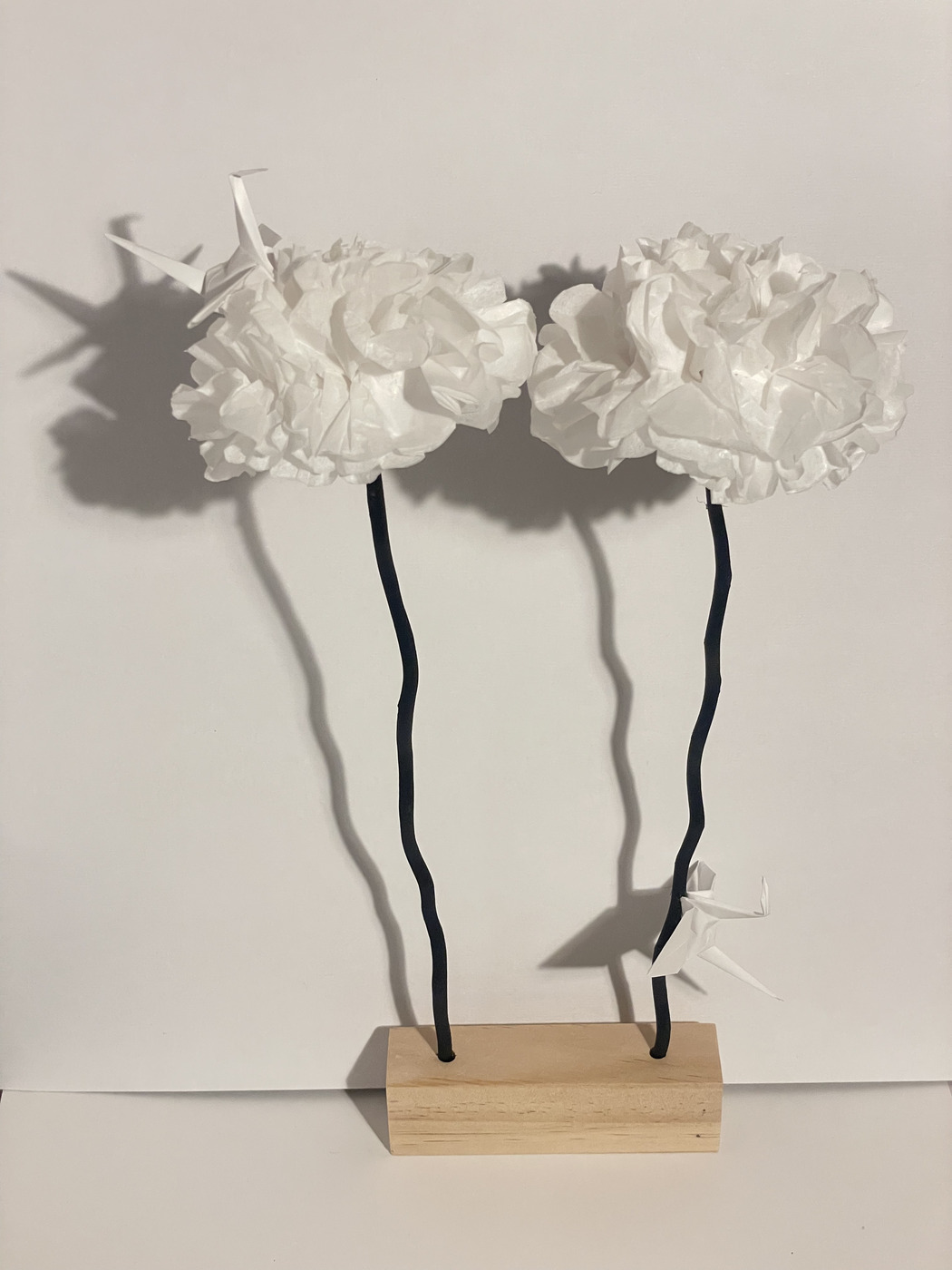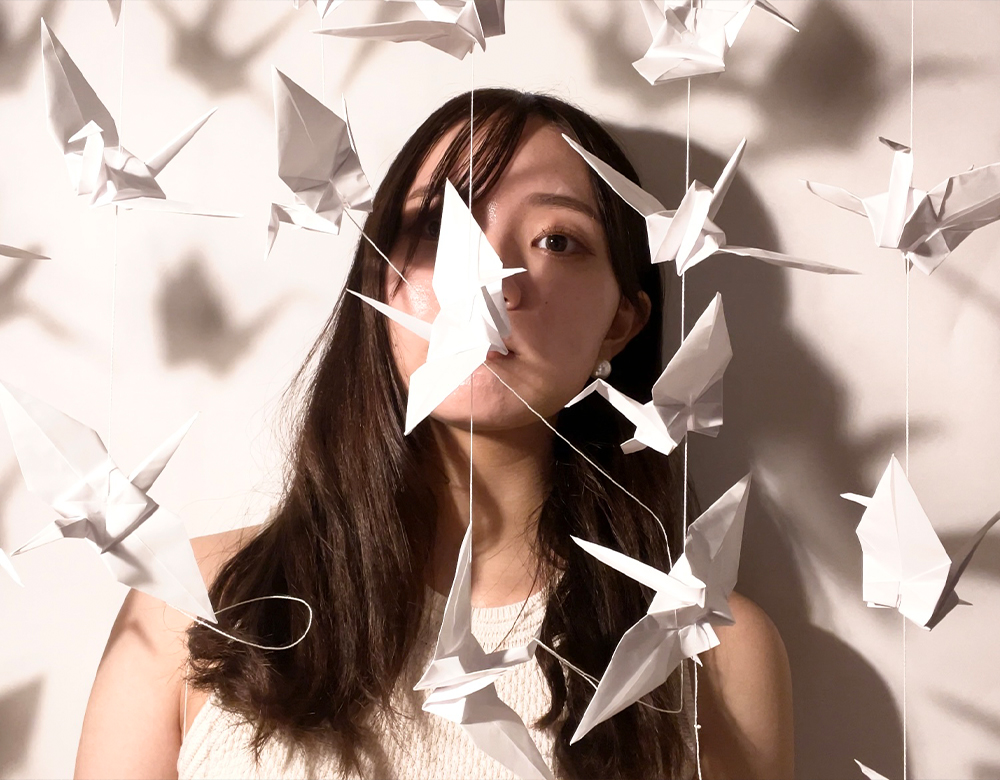Kono Mae
Year of birth: 2005
Where do you live: Japan
Website | Instagram
You grew up in an international environment, but later sought to reconnect with your Japanese heritage. How did this journey influence your artistic style and creative expression?
Although I was raised in an international environment, I began seeking reconnection with my Japanese roots out of a growing sense of discomfort and inner conflict about not truly knowing my own country. From a young age, I attended international schools and spent my days learning alongside friends from diverse backgrounds. Naturally, I was seen as “Japanese,” but when asked about Japanese history or culture, I often found myself unable to respond. These moments made me painfully aware of my own ignorance.
At one point, someone asked me, “How can you love another country if you don’t love your own?” I was even called a “fake Japanese.” Those words deeply hurt me and pushed me to reflect on my identity. This became the turning point that sparked a strong desire to learn about Japan more seriously and reconnect with my cultural roots.
This journey has had a profound impact on my artistic expression. My works aim to convey the beauty and spirit of Japanese culture—not by simply replicating tradition, but by reinterpreting it through a global lens and connecting it to universal, contemporary themes. For example, I created an installation using origami cranes made of traditional washi paper, arranged in space to represent diversity and a collective prayer for peace.
Growing up in an international environment has given me the ability to view Japanese culture with perspective and to understand Japan’s position in the world. I believe that the intersection of these two viewpoints—the insider and the outsider—is where the unique potential of my creative work lies. Moving forward, I hope to continue fusing traditional Japanese culture with modern values and share it with a global audience.
 Kono Mae | lourishing Cranes | 2024
Kono Mae | lourishing Cranes | 2024
In your final project for Visual Arts at the international school, you explored Japan’s culture. What elements of Japanese tradition or symbolism do you often incorporate into your artwork?
For my final project in Visual Arts at my international school, I created a work based on the concept of In Praise of Shadows, which symbolizes the aesthetic values of Japanese culture. In Praise of Shadows is an essay on Japanese aesthetics written by Junichiro Tanizaki in 1933. It compares the perception of “shadows” in Western and Japanese cultures. Tanizaki argues that while Western culture seeks to eliminate shadows by illuminating every corner of a space, Japanese culture accepts and even reveres shadows as an essential aspect of beauty. I deeply resonated with this notion, particularly the idea that beauty resides in the dim light of traditional Japanese architecture and lifestyle, and incorporated this philosophy into my artwork.
One of the most prominent Japanese elements in my work is the simplicity and refined sense of beauty rooted in traditional Japanese aesthetics. Rather than using vivid colors or pop styles, I consciously choose muted tones, soft hues, and earth colors to convey a sense of tranquility and depth, visually expressing the quiet elegance unique to Japan.
Additionally, Japanese culture has long valued harmony with nature. Following this principle, I actively incorporate natural materials such as wood, bamboo, and washi paper into my work. These materials not only add organic warmth but also serve as a way to honor and celebrate Japan’s cultural heritage.
The use of origami and paper in your pieces seems to be a central theme. What is it about these materials that resonates with you, and how do you feel they enhance your exploration of Japanese culture?
Actually, origami cranes and washi paper are not always the central focus of my work. I have explored a wide range of themes and genres throughout my artistic journey. However, my current project centers around the theme of “peace,” and I am creating an installation that uses origami cranes as its symbolic motif.
The reason I feel so strongly connected to this theme is because I deeply care about global conflicts and the state of the world. Growing up in an international environment, I was naturally surrounded by friends from diverse nationalities. Through the conflicts and social issues occurring in their home countries, I developed the ability to see global events not as someone else’s problems, but as my own. In addition to my perspective as a Japanese individual, my exposure to diverse worldviews has profoundly shaped the themes I explore in my art.
The origami crane is widely known as a symbol of peace through the story of Sadako Sasaki, a young girl who was exposed to radiation in Hiroshima. Sadako folded a thousand cranes while praying for recovery and world peace. Her story transcended time and borders, making the crane a global symbol of hope, prayer, and peace.
With its roots in Japan and its universal message, the origami crane is a powerful tool for expressing global issues through a Japanese cultural lens. Likewise, washi—a traditional Japanese handmade paper—adds warmth and spirituality to my work through its unique texture and tactile quality.
By using the crane as a motif, I continue to explore the essence and spirit of Japanese culture while confronting the issues that modern society faces today.
 Margarita Timofeeva | Threads of Prayer | 2025
Margarita Timofeeva | Threads of Prayer | 2025
The works you’ve created, such as “Blossom of Peace” and “Flourishing Cranes,” seem to embody peace and growth. How do these themes manifest in your creative process, and what do they mean to you personally?
In my works Blossom of Peace and Flourishing Cranes, the themes of “peace” and “growth” are deeply embedded—not as abstract concepts, but as values that naturally emerged from my personal experiences and creative foundation.
Growing up in an international environment, I was constantly surrounded by people of different values, backgrounds, nationalities, cultures, and religions. One of the most important lessons I learned was that what is considered “normal” or “common sense” varies greatly from person to person. Understanding one another requires time, effort, and at times, leads to misunderstandings or conflict. However, through dialogue, the willingness to build relationships, and mutual openness, I realized that people can indeed connect, empathize, and grow together.
From these experiences, I came to firmly believe that the effort to understand others is the key to uniting the world and achieving true peace. I also experienced many challenges while engaging with people from diverse backgrounds, but overcoming them allowed both myself and others to grow in meaningful ways. This is why I see a profound connection between peace and growth.
In my artistic process, I strive to express the beauty of harmony among differences and the growth that comes from overcoming obstacles together. For example, in my installations, I carefully layer origami cranes in a way that they support one another to form a unified space—visually conveying messages of solidarity and coexistence.
To me, peace is “a relationship built through dialogue and empathy,” and growth is “the internal transformation born from that process.” These two values lie at the heart of my artistic expression and are ones I will continue to cherish moving forward.
Your work appears to combine delicate, intricate designs with deep symbolism. How do you approach the balance between aesthetic beauty and the powerful messages embedded in your pieces?
For me, both aesthetic beauty and the message embedded in a work are essential, inseparable elements. Visual beauty serves as the initial gateway—it is what first captures the viewer’s attention and gently guides them toward the deeper message within. In creating my work, I am mindful not to convey the message in a one-sided way, but rather to leave space for the viewer to reflect, feel, and interpret on their own terms.
I aim to infuse quiet strength into my expressions—art that speaks softly, yet powerfully, to the heart. I see art as a starting point for dialogue, a place where emotions and values can intersect between the viewer and myself. That’s why I carefully maintain a balance between aesthetic elegance and symbolic meaning, always striving to create works that raise profound questions and invite introspection.
 Margarita Timofeeva | Blossom of Peace | 2025
Margarita Timofeeva | Blossom of Peace | 2025
How has studying at an international school shaped your views on art, culture, and identity, and how do these influences show up in your art today?
My education at an international school deeply shaped my artistic vision, cultural awareness, and personal identity. Engaging daily with people from diverse cultural and value backgrounds often challenged my own assumptions, and gradually led me to confront the question: “Who am I?” A turning point came when I was seen as “Japanese” by others but couldn’t answer questions about Japan. That experience was both frustrating and eye-opening—it became the catalyst for me to reconnect with my roots. I began to study Japanese culture more deeply, and this journey now informs my creative work. My art reflects not only traditional Japanese aesthetics, but also a dual perspective—Japan as seen from within, and Japan as observed from the outside. Having grown up surrounded by different cultures, I’ve developed a unique sensitivity that allows me to explore themes like identity, culture, peace, and coexistence from multiple angles. In this sense, my art is not merely a representation of culture; it is a reflection of my ongoing process of questioning and seeking. It is born from a space between cultures, and it continues to evolve as I grow, think, and connect.
What role does nature play in your work, especially considering the Japanese cultural connection to nature and its cycles of life?
Nature plays a vital role in my work. In Japanese culture, harmony with nature and the cyclical rhythm of life have been deeply cherished throughout history. The changing of the seasons and the blooming of flowers are natural phenomena that continue to inspire my art. Especially today, as environmental issues become increasingly urgent, expressing our connection to nature carries even greater significance.
I believe that portraying not only the beauty and strength of nature, but also its fragility, transience, and constant transformation, is essential for conveying a powerful message to those living in the present. The global environmental crisis has brought a new dimension to my work, prompting me to re-examine the relationship between humans and the natural world.
The natural materials I use—such as bamboo, wood, and washi paper—carry with them a sense of vitality and energy inherited from the earth. These materials, rooted in tradition and shaped by nature, serve as a gentle yet powerful reminder of the need to restore harmony with our environment. I believe that in today’s world, art has the power to reconnect us with the natural world and inspire action through reflection.


Leave a Reply